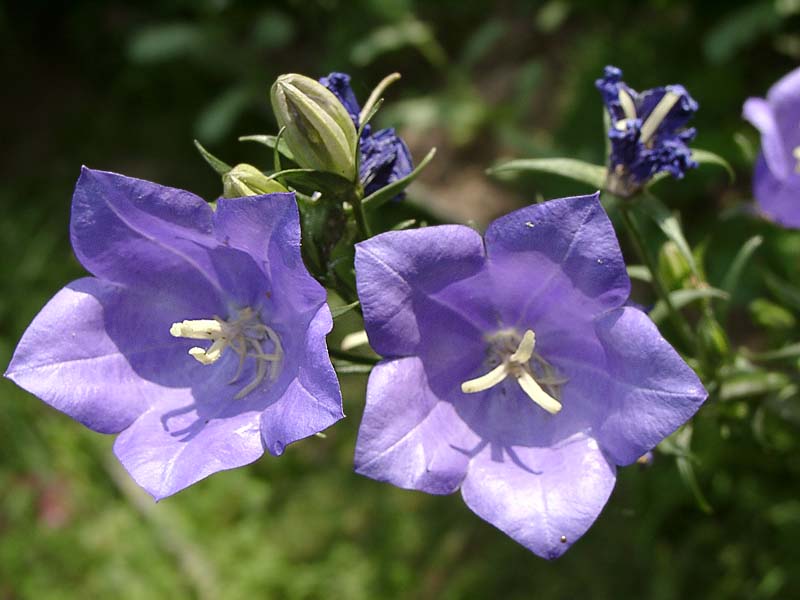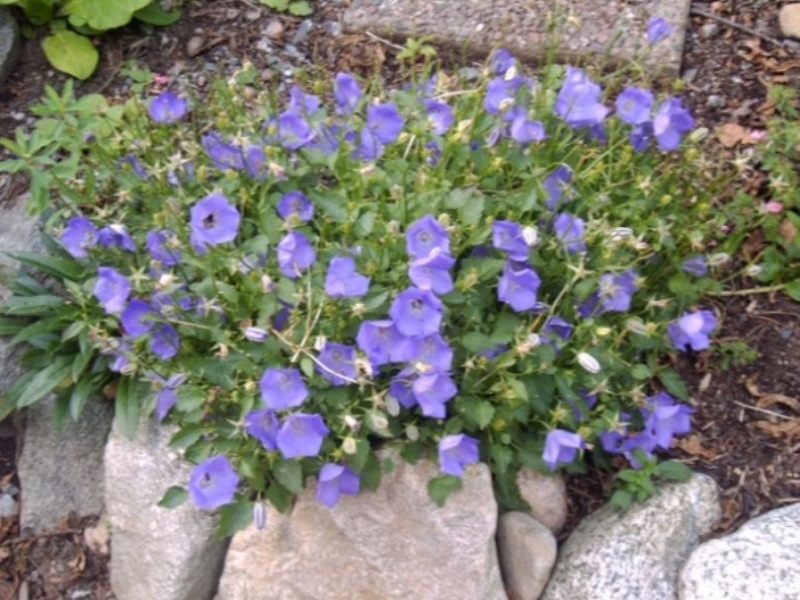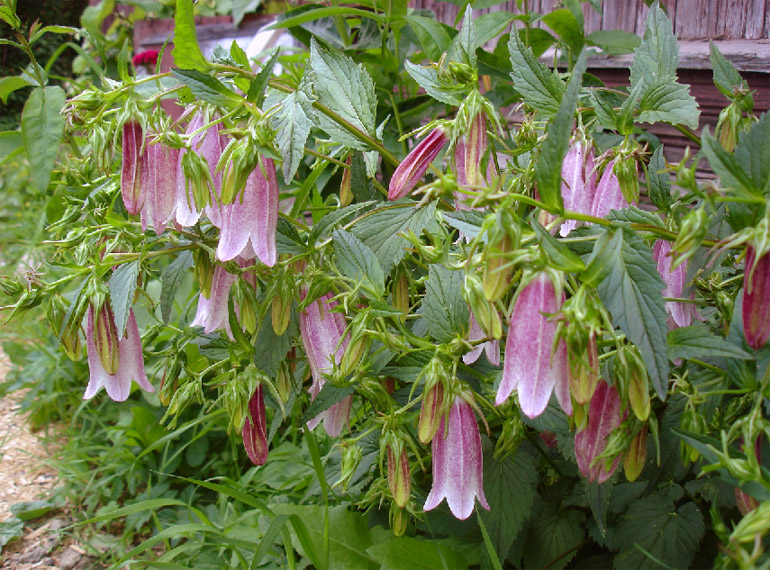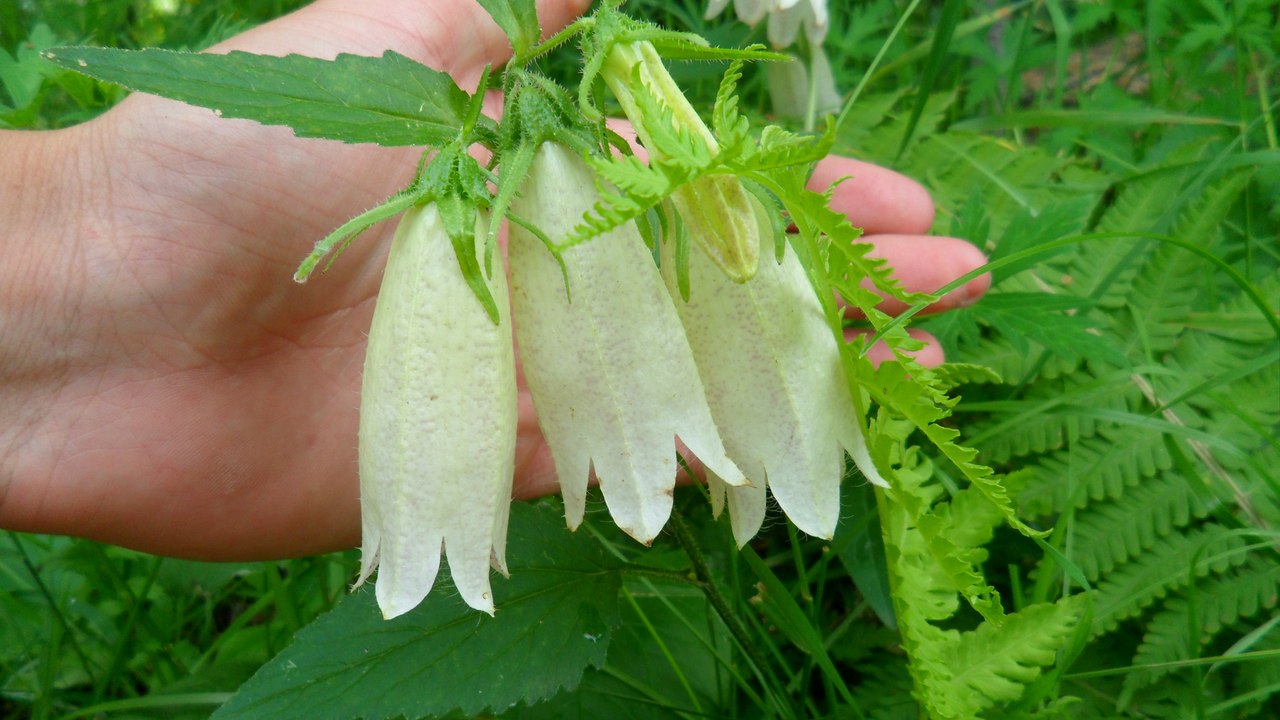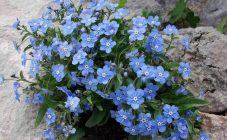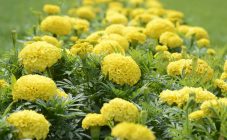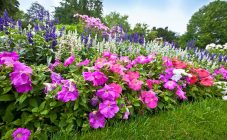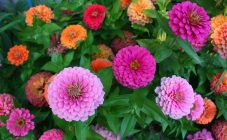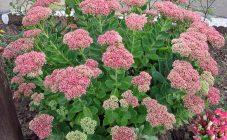Content:
Breeders have long paid attention to an unpretentious plant with flowers that look like small bells. It was adapted for cultivation in suburban areas, adjoining territories, parks, home and city gardens.
General information
The botanical name of the flower is campanula, which means "bell". In Russia, the plant has always been given tender names: chebots, bells, birdwort. According to the legend, the ringing of the bells could be heard only on the night of Ivan Kupala.
In the old days, campanula was used not only as a garden or indoor decoration, but also as a remedy. In addition, the leaves and roots of some bushes are used in cooking.
Plant characteristic
Flowers bells perennial - plants, depending on the species, with a creeping, long or creeping stem; oblong or rounded leaves. The height of the bushes varies from 10 to 150 cm. The corolla can be bell-shaped, tube-bell-shaped, funnel-shaped.
Flowering ends with the formation of a fruit in the form of a capsule. It contains many seeds. The growing season of bells begins at + 5 ° C and ends at the onset of the first frost.
There are green spaces in nature, very similar to bells. Here are some of them:
- adenophore;
- aquilegia;
- brugmansia;
- hyacintoides;
- digitalis;
- symphiandra.
Characteristics of species and varieties
Perennials garden bells are subdivided into low, medium and tall.
The undersized include:
- Carpathian - a bush up to 30cm in height from the Carpathians. It is subdivided into several varieties: White Star, Alba (with white flowers), Riversley (with blue flowers), Carpatencrone (with purple flowers).
- Gargan - plant height no more than 15 cm, its shoots are creeping. Varieties: Major with light blue flowers, H. Paine - lavender.
Medium-sized species:
- Takeshima is a bush with a root rosette, about 60cm high. Varieties: Beauty Trust - with white arachnid flowers, Wedding Belz - with white bell-shaped flowers.
- Point - has a thin, fibrous shoot, about 50 cm high; drooping flowers, goblet-shaped. Popular variety: Rubra, brightly colored flowers.
Tall species:
- Broadleaf - it has a bare shoot about 1m high. Flowers, up to 6 cm long, funnel-shaped. Varieties: Alba (with white flowers), Brantwood (with purple flowers).
- Peach-leaved - got the name because of the leaves that look like peach. Paniculate inflorescences, consisting of several flowers. Varieties: Bernice, his flowers are double, blue, Snowdrift - white flowers.
Perennial garden bells: planting and care
Bushes are planted in open ground in late spring - early summer. Planting and caring for a garden flower with a bell is not difficult. The landing site is chosen sunny, protected from drafts. The soil is chosen loamy, slightly alkaline or neutral. Fertilizers are applied to poor soil, humus or sand to heavy soil.
In order for the root system to receive nutrients and water, tall shrubs and trees should not grow nearby. The interval between low-growing bells is 10-15cm, medium-sized bells - 20-30cm, tall ones - 40-50cm.Plants are planted, the earth is compacted and watered.
In the future, you need to take care of the bell: regularly water, loosen the soil, remove weeds, cut off wilted flower stalks. In spring, organic fertilizing is needed, then, when the buds are tied, with complex fertilizer. For the winter, it is advisable to sprinkle the bushes with peat or humus, cover with spruce branches.
Perennial bells can multiply by seeds, cuttings, dividing a bush, pieces of rhizomes. The procedure is usually performed in the spring. Slices are treated with charcoal before planting.
Diseases and pests
The bell flower garden has high immunity, rarely exposed to diseases. But, with long-term cultivation of it in one place, pathogens can accumulate in the soil, which have a detrimental effect on the bushes. For prevention, they need to be sprayed with a fungicide solution in spring and autumn.
Perennial flowers garden bells can be chosen by a slobbering penny. It appears in wet weather. To get rid of it, the bushes are irrigated with garlic infusion.
Bells blend well with other green spaces. A wide variety of species and varieties of perennial bells will allow the gardener to effectively landscaping the site, planting bushes in monochrome or combining with other plants.
